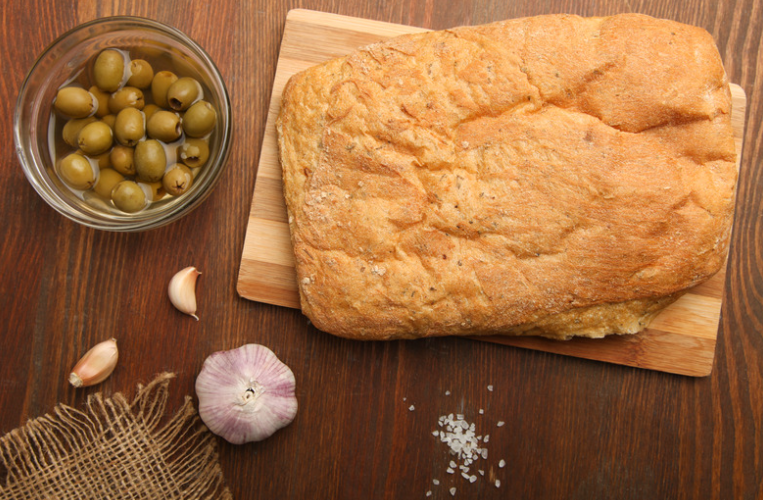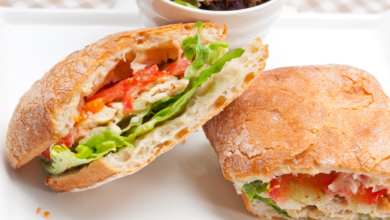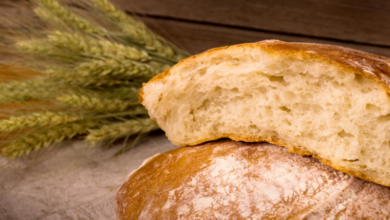Why Is My Ciabatta Molding So Fast? A Simple Solution!

What To Know
- Avoid leaving it in warm or humid environments, such as on the kitchen counter or in a closed plastic bag.
- Store ciabatta bread in a cool, dry place, such as a breadbox or airtight container.
- Preventing mold growth in ciabatta bread requires a combination of proper storage, clean handling practices, and the use of high-quality ingredients.
Ciabatta, the beloved Italian bread known for its airy, open crumb and crispy crust, can sometimes succumb to the unfortunate fate of rapid mold growth. This can be a perplexing problem for bakers, leaving them wondering what went wrong. In this comprehensive guide, we will delve into the potential causes of ciabatta bread molding quickly and provide practical solutions to prevent it.
Factors Contributing to Mold Growth
1. Moisture Content
Ciabatta bread is characterized by its high moisture content, which is essential for achieving its signature texture. However, this moisture can also create a favorable environment for mold spores to thrive. When the bread is not stored properly or is left exposed to humid conditions, it becomes more susceptible to mold growth.
2. Storage Conditions
Ciabatta bread should be stored in a cool, dry place to prevent mold growth. Avoid leaving it in warm or humid environments, such as on the kitchen counter or in a closed plastic bag. Instead, store it in a breadbox or airtight container to minimize moisture exposure.
3. Contamination
Mold spores can easily spread through contact with contaminated surfaces or utensils. Ensure that your hands, work surfaces, and baking tools are clean before handling the bread. Avoid touching the bread directly with your bare hands, and use a clean knife to slice it.
4. Flour Quality
The quality of the flour used can also influence the speed of mold growth. Low-quality flour may contain impurities or mold spores that can contaminate the bread dough. Use high-quality bread flour that is fresh and free of any visible signs of contamination.
5. Yeast Activity
Yeast is a key ingredient in bread-making, but excessive yeast activity can contribute to rapid mold growth. Ensure that you use the correct amount of yeast and follow the recipe instructions carefully. Over-proofing the dough can create an environment that is conducive to mold growth.
6. Acidity Level
The acidity level of the bread dough plays a role in preventing mold growth. Sourdough starters and vinegar can be used to create an acidic environment that inhibits the growth of mold spores. Consider incorporating these ingredients into your ciabatta bread recipe.
7. Additives and Preservatives
Commercial ciabatta bread often contains additives and preservatives that can slow down mold growth. However, these additives may not be desirable for those who prefer natural and preservative-free bread. If you are making your own ciabatta bread, consider using natural methods to prevent mold growth, such as proper storage and the use of acidic ingredients.
How to Prevent Mold Growth
1. Store Properly
Store ciabatta bread in a cool, dry place, such as a breadbox or airtight container. Avoid storing it in warm or humid environments.
2. Keep It Clean
Ensure that your hands, work surfaces, and baking tools are clean before handling the bread. Use a clean knife to slice it.
3. Use High-Quality Ingredients
Use high-quality bread flour that is fresh and free of any visible signs of contamination.
4. Control Yeast Activity
Follow the recipe instructions carefully and use the correct amount of yeast. Avoid over-proofing the dough.
5. Create an Acidic Environment
Incorporate sourdough starters or vinegar into your ciabatta bread recipe to create an acidic environment that inhibits mold growth.
6. Use Natural Preservatives
If you are making your own ciabatta bread, consider using natural preservatives, such as rosemary or lemon zest, to slow down mold growth.
7. Freeze for Long-Term Storage
For long-term storage, consider freezing the ciabatta bread. This will slow down mold growth significantly.
Troubleshooting Tips
If your ciabatta bread is molding quickly despite following these preventive measures, try the following troubleshooting tips:
- Check the expiration date of your flour. Mold spores can contaminate flour over time.
- Inspect your storage area for moisture. Ensure that your breadbox or airtight container is not damp.
- Clean your work surfaces and utensils thoroughly. Mold spores can easily spread through contact.
- Consider using a bread machine. Bread machines can create a controlled environment that helps prevent mold growth.
Wrapping Up: The Secret to Mold-Free Ciabatta
Preventing mold growth in ciabatta bread requires a combination of proper storage, clean handling practices, and the use of high-quality ingredients. By understanding the factors that contribute to mold growth and implementing the preventative measures outlined in this guide, you can enjoy the deliciousness of ciabatta bread without the worry of rapid spoilage. Remember, the key is to create an environment that is unfavorable for mold spores to thrive.
Answers to Your Questions
1. Why is my ciabatta bread molding so quickly?
Ciabatta bread is susceptible to mold growth due to its high moisture content, improper storage conditions, contamination, and other factors.
2. How can I store ciabatta bread to prevent mold?
Store ciabatta bread in a cool, dry place, such as a breadbox or airtight container. Avoid storing it in warm or humid environments.
3. What can I do if my ciabatta bread is already molding?
If your ciabatta bread is already molding, discard it immediately to prevent the spread of mold spores.





